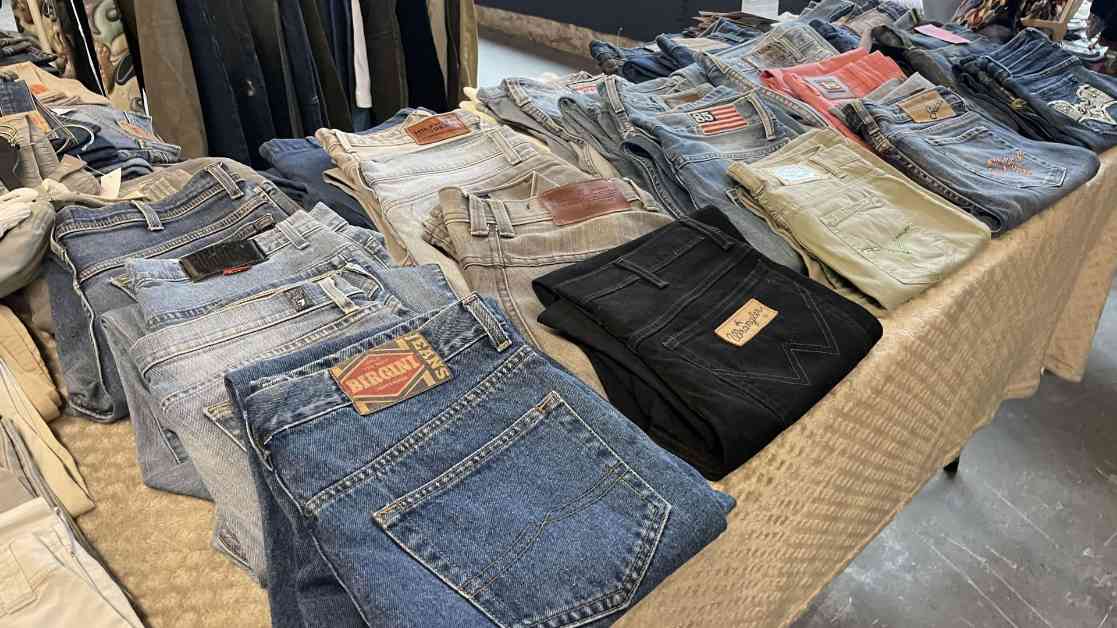Every first Sunday of the month, around seventy vintage clothing and object vendors gather at the Brussels Vintage Market. Vintage cameras, retro glasses, leather jackets, colorful sweaters… attract customers of all ages.
« I am really interested in antique jewelry and lace clothing, » explains Ariane. It is the first time she and her friend Nathalie have set foot in a vintage market. « It’s a new experience for us, we will come back if we enjoy it, » the two ladies assure.
Vintage is attracting new audiences and becoming increasingly popular. Since its launch 13 years ago, the Brussels Vintage Market has expanded to three different locations, each larger than the last to accommodate more people.
« Vintage is always in demand. People enjoy hunting for treasures, » says Lorie Wolujewicz, a volunteer with the market organization. However, the volunteer distinguishes vintage from second hand. « In second hand, you can find anything, whereas in vintage, there is more of a curated selection from sellers who often go hunting. The idea in vintage is also to avoid fast fashion, to have pieces from good brands, from designers. It’s of better quality, » she says.
Higher prices
90 euros for a branded sweater, 50 euros for a pair of jeans, 20 euros for a t-shirt… the prices of vintage products are often much higher than those in kilo second hand stores, for example.
Stephanie has been a vintage seller for 15 years. She spends a lot of time searching for clothing. How? « Flea markets, flea markets, flea markets and more flea markets, » she explains, « I travel all over Belgium, it’s a lot of work but I’m passionate about it. » And this search and selection is reflected in the prices. The most important thing for Stephanie is to ensure the quality of the products. « By touch, you can tell the condition of the fabric, we look at the finishes, » she explains, « I also select a bit based on what is trendy. »
Olivier has been a vintage seller for three years. He ensures that « the quality of clothing was generally much better in the past. » And when some customers make remarks about the prices of the clothing, he responds: « If this 30-year-old pair of jeans has managed to stand the test of time and is still in great condition, it is even more valuable than a new pair of jeans from the same brand. » And then, he adds, « you don’t see them worn by others on the street. »
People sometimes think they are at a flea market
A little further, the seller Roméo explains that he sometimes feels « people think they are at a flea market. They negotiate a pair of jeans marked at 40 euros down to 15 euros, but we paid more for it ourselves. » However, he says, « customers are starting to become aware of the reality of the market. »
The success of vintage and second hand in general can also make the work of sellers more complicated. « It’s good for environmental awareness but it makes our task more difficult, » explains Stephanie. She elaborates: « There are more and more people selling vintage/second hand, but the source is running out. We have started to find all the clothing from the 60s-70s-80s and now we are also looking for more recent clothing. But from the 2000s, the quality drops terribly. You can see it just by the thickness of the jeans, which is twice as thin. »

